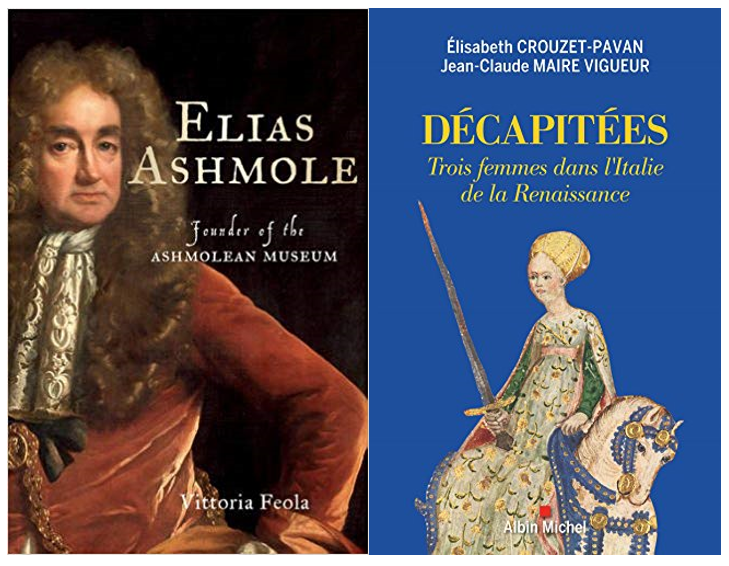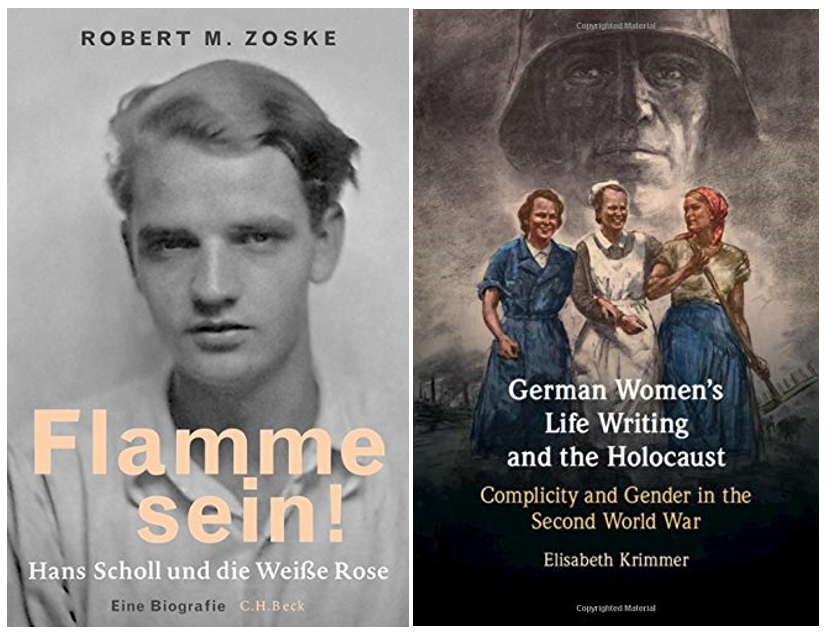Throughout the ages writers have produced countless famous biographies of similarly famous men in history, from Plutarch’s Lives of the Noble Greeks and Romans (2nd century AD) to Vasari’s Lives of the Most Excellent Painters, Sculptors, and Architects of Renaissance Italy (1550), Boswell’s Life of Samuel Johnson (1791), Carlyle’s Life of Frederick the Great (1858), or even Ian Kershaw’s Hitler (1991).
Because of its connection to and overlap with popular books of the less scholarly “life writing” tradition, academic historical biography has been something of a stepchild for the subject: “The border separating history and biography has always been uncertain and anything but peaceful” is how Sabina Loriga puts it in her chapter on “The Role of the Individual in History” in a recent volume on Theoretical Discussions of Biography (Loriga, 2014, p. 77). Loriga discusses questions of biographical analysis (“What is important and unimportant in the life of a person?”) as well as questions concerning the relationship between biography and history (“Can the life of an individual illuminate the past?”) (Loriga, 2014, 89). Academic historical biography is thus concerned with both these types of questions, and uses biographical information to examine the lives of individuals in relation to secular and ecclesiastical institutions, local communities, social groups, and other entities, to, as Loriga phrases it, “reassess the balance between personal destinies and social structures” (Loriga, 2014, 90).
Thomas Carlyle famously stated that “the history of the world is but the biography of great men”, but the latest Bodleian acquisitions of the genre beg to differ on both the “great” and the “men” parts of this statement – they include accounts of the lives of undeniably fascinating and influential but not necessarily history-making men and, importantly, women from a vast range of different times, locations, societies, and social circumstances. Here are only a few examples from the three main historical eras to whet your appetite.
For the medieval era, Giorgio Godi describes in detail a few years of the fascinating life and times of the 14th-century longbow man, soldier and mercenary captain John Hawkwood, a man of almost mythical proportions.
Medieval women are also well-represented: Leonora Alice Neville presents a volume on the life and work of Anna Komene, the 12th century Byzantine princess, scholar, physician, hospital administrator, and historian, daughter of the Byzantine Emperor Alexios I Komnenos and historical biographer in her own right as the author of The Alexiad, her account of her father’s reign. In her Stories of women in the Middle Ages, Maria Teresa Brolis then tells the fascinating tales of sixteen other medieval women who led equally interesting lives as fashion icons, art clients, businesswomen, saints, healers, lovers, or pilgrims throughout the European Middle Ages, from Hildegard of Bingen to Heloise, Eleanor of Aquitaine, Saint Clare of Assisi, Joan of Arc, and to lesser-known but still well-documented women such as a moneylender, a healer, and a pilgrim.
 The early modern era is represented by a man very close to home in Vittoria Feola’s biography of Elias Ashmole, whose donation of his cabinet of curiosities to the University of Oxford in 1677 led to the establishment of the world’s first university museum, the Ashmolean. Rather less fulfilled (and certainly shorter) lives were led by the three women of the Italian Renaissance which are the subject of Elisabeth Crouzet-Pavan’s and Jean-Claude Maire Vigueur’s book Décapitées. As the title rather suggests, she singles out three cases of women who were beheaded – or more precisely publicly executed for adultery on the orders of their husbands. These wives of three of the greatest lords of Renaissance Italy – Mantua, Milan, and Ferrara – were executed for adultery, though on a closer look it seems what they were most guilty of was having tried to take an active part in the great political and cultural innovations of their time.
The early modern era is represented by a man very close to home in Vittoria Feola’s biography of Elias Ashmole, whose donation of his cabinet of curiosities to the University of Oxford in 1677 led to the establishment of the world’s first university museum, the Ashmolean. Rather less fulfilled (and certainly shorter) lives were led by the three women of the Italian Renaissance which are the subject of Elisabeth Crouzet-Pavan’s and Jean-Claude Maire Vigueur’s book Décapitées. As the title rather suggests, she singles out three cases of women who were beheaded – or more precisely publicly executed for adultery on the orders of their husbands. These wives of three of the greatest lords of Renaissance Italy – Mantua, Milan, and Ferrara – were executed for adultery, though on a closer look it seems what they were most guilty of was having tried to take an active part in the great political and cultural innovations of their time.
 On the cusp of the modern era we then find In Napoleon’s shadow, an account of a life lived not as, but alongside a traditional “great man” – it is an edition of the complete memoirs of Louis-Joseph Marchand, the personal valet to Napoleon Bonaparte during his exile to Elba, the Hundred Days, and his exile to St Helena until his death.
On the cusp of the modern era we then find In Napoleon’s shadow, an account of a life lived not as, but alongside a traditional “great man” – it is an edition of the complete memoirs of Louis-Joseph Marchand, the personal valet to Napoleon Bonaparte during his exile to Elba, the Hundred Days, and his exile to St Helena until his death.
 Moving into the 20th century the men are represented by a very brief life, with an even briefer apogee, but nonetheless one which : Robert M. Zoske’s Flamme sein! (“Be a flame!”) is a biography of Hans Scholl, founder of the nonviolent Nazi resistance movement Die Weisse Rose. It was less than a year after the group started distributing their leaflets at German universities in the early summer of 1942, Hans and his sister Sophie were arrested, tried, and shortly after executed on 22 February 1943. A detailed look at the same period of German history from the female side is shown in Elisabeth Krimmer’s German women’s life writing and the Holocaust, which looks at memoirs, diaries, or autobiographically inspired fiction of women who were complicit bystanders during the National Socialist regime, whether as army auxiliaries or nurses, but also as female refugees, rape victims, and Holocaust survivors – their continuing support for the regime and, in some cases, their growing estrangement from it.
Moving into the 20th century the men are represented by a very brief life, with an even briefer apogee, but nonetheless one which : Robert M. Zoske’s Flamme sein! (“Be a flame!”) is a biography of Hans Scholl, founder of the nonviolent Nazi resistance movement Die Weisse Rose. It was less than a year after the group started distributing their leaflets at German universities in the early summer of 1942, Hans and his sister Sophie were arrested, tried, and shortly after executed on 22 February 1943. A detailed look at the same period of German history from the female side is shown in Elisabeth Krimmer’s German women’s life writing and the Holocaust, which looks at memoirs, diaries, or autobiographically inspired fiction of women who were complicit bystanders during the National Socialist regime, whether as army auxiliaries or nurses, but also as female refugees, rape victims, and Holocaust survivors – their continuing support for the regime and, in some cases, their growing estrangement from it.
 You can find all items tagged as “biography” in the Bodleian History collections here.
You can find all items tagged as “biography” in the Bodleian History collections here.

